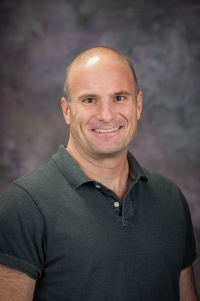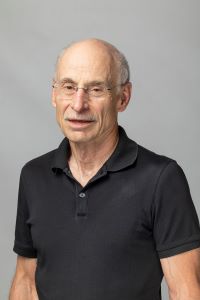NSF REU at K-State: Laser-matter Interactions at the Atomic and Nanoscales
The K-State REU program offers summer fellowships to do world-class research in our friendly physics department in the scenic Flinthills. We are funded by the National Science Foundation.
Condensed Matter (CM) or Soft Matter Physics
 Dr. Jeremy Schmit: Stability of Protein Complexes
Dr. Jeremy Schmit: Stability of Protein Complexes
Email: schmit@phys.ksu.edu
Protein self-assembly is a vital process in many aspects of cellular function. In my research group we use theoretical methods to understand how these molecules assemble into desired structures or get trapped into non-productive intermediates. In this project we will study the growth of protein crystals; a well-characterized, albeit non-physiological, protein assembly. We we develop simple computer simulations to study how protein are able to discriminate "correct" binding configurations from incorrect ones. A goal of this project is to learn why crystal grown in space (i.e. on the space shuttle or ISS) are often of higher quality than those grown on Earth. Prospective students should have a basic knowledge of computer programming.

Dr. Chris Sorensen: Aerosol Microscope
Email: sor@phys.ksu.edu
We have a project in which we will study the light scattering patterns from irregularly shaped particles, such as those that are often found in the atmosphere. We hope to correlate the morphology (shape and size) of the particles to their light scattering patterns. Thus we need to measure both. To measure particle morphology, we want to build a long working distance microscope to see the aerosol particles as they fly through the scattering volume in a jet of air. Since they are moving, we need fast exposure times which we will achieve with a microsecond flash lamp. We need a student to help us solve the optical problem of achieving resolutions of perhaps 0.5 micron, given the long working distance, and to construct the device. Scattering by irregularly shaped particles is an important issue with regard to the radiation budget of our Earth and global warming.
Dr. Chris Sorensen: Fractal Aggregates
Email: sor@phys.ksu.edu
We will perform experimental studies of how light backscatters from fractal aggregates. Backscattering includes scattering at angles from ca. 160 to 180 degrees from the forward direction. Fractal aggregates are quite common in nature resulting from the random aggregation of solid particles. This combination is as yet to be explored hence offers some good physics to be discovered. Furthermore, it is important with regard to backscattering of sunlight from such aggregates in the atmosphere, aggregates such as soot from fossil fuel combustion, and with regard to detection and measurement of atmospheric aggregates with remote sensing sources. These are important issues with regard to the radiation budget of our earth and global warming.
 Dr. Robert Szoszkiewicz, Towards fast and quantitative cancer detection
Dr. Robert Szoszkiewicz, Towards fast and quantitative cancer detection
Email: rs@phys.ksu.edu
The project will be to prepare nano-patterned surfaces to be used later for cancer diagnostics. Main technique to use will be atomic force microscopy (AFM), and in particular a thermochemical nanolithography (TCNL). TCNL utilizes a hot AFM tip to provoke chemical reactions on arbitrary surfaces of some polymers. Those chemical reaction are heat induced and spatially localized to tens of nm or less. The tasks of an REU student will be to learn how to prepare a given polymer surface via spin coating, then perform surface topography imaging of such surfaces using AFM, and finally to nanopattern such surfaces using the TCNL method. The nanopatterned polymer surfaces will be later used to attach some cancer biomarkers, which will serve as detectors of particular types of cancer. This project is a part of a bigger KSU-KU cancer efforts, and will be done in collaboration with KSU Chemistry Department. A prospective REU student will work directly with a graduate/undergraduate students in the Szoszlab, potentially interact with KSU Chemistry REU students, and be supervised by Dr. Robert Szoszkiewicz. For more details about the Szoszlab, please see www.phys.ksu.edu/szoszlab.